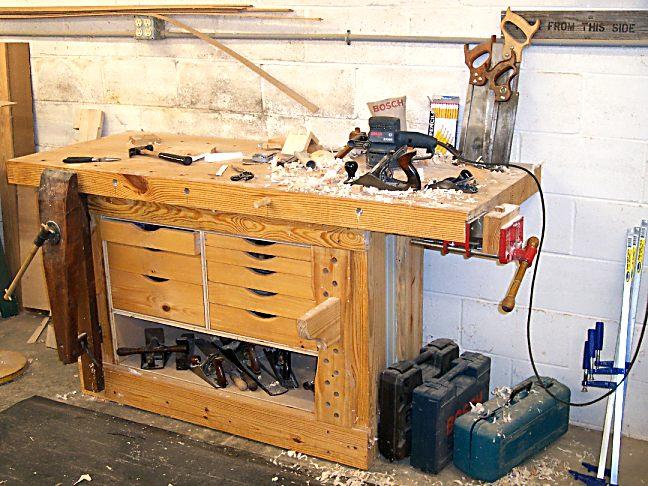Doug Shepard
In Memorium
- Messages
- 772
- Location
- Waterford, MI
Looking through the Workbench Book, I've been wondering about how to best support the RH end of long pieces. I'll probably start adding the hardwood edging on my BB ply core benchtop this weekend. I've got one idea that I've loosely taken from a couple different things in the book. If I decide to go this route, I'll have to route for this before I start mounting anything else under the top. This is going on a Adjust-A-Bench leg set, so I wont be able to do anything with a fixed bottom end like a regular board jack. So one idea goes something like this



Haven't totally figured out what the clamping or support mechanism on the front vertically sliding block would be, but I think that could be dealt with in a number of ways. But my idea is that the front block would be adjustable vertically and tightened to the back block with a fixture knob. The back block would slide right/left in the sliding dovetail with an open pocket on the RH end so the whole thing could be removed.
Or... just put dog holes on the front edge of the bench and use one of these LV surface clamps ??
http://www.leevalley.com/wood/page.aspx?c=2&p=57059&cat=51&ap=3
Or.... just toss a parallel jaw clamp across the top of the bench and clamp a board in place??
Any thoughts?



Haven't totally figured out what the clamping or support mechanism on the front vertically sliding block would be, but I think that could be dealt with in a number of ways. But my idea is that the front block would be adjustable vertically and tightened to the back block with a fixture knob. The back block would slide right/left in the sliding dovetail with an open pocket on the RH end so the whole thing could be removed.
Or... just put dog holes on the front edge of the bench and use one of these LV surface clamps ??
http://www.leevalley.com/wood/page.aspx?c=2&p=57059&cat=51&ap=3
Or.... just toss a parallel jaw clamp across the top of the bench and clamp a board in place??
Any thoughts?



